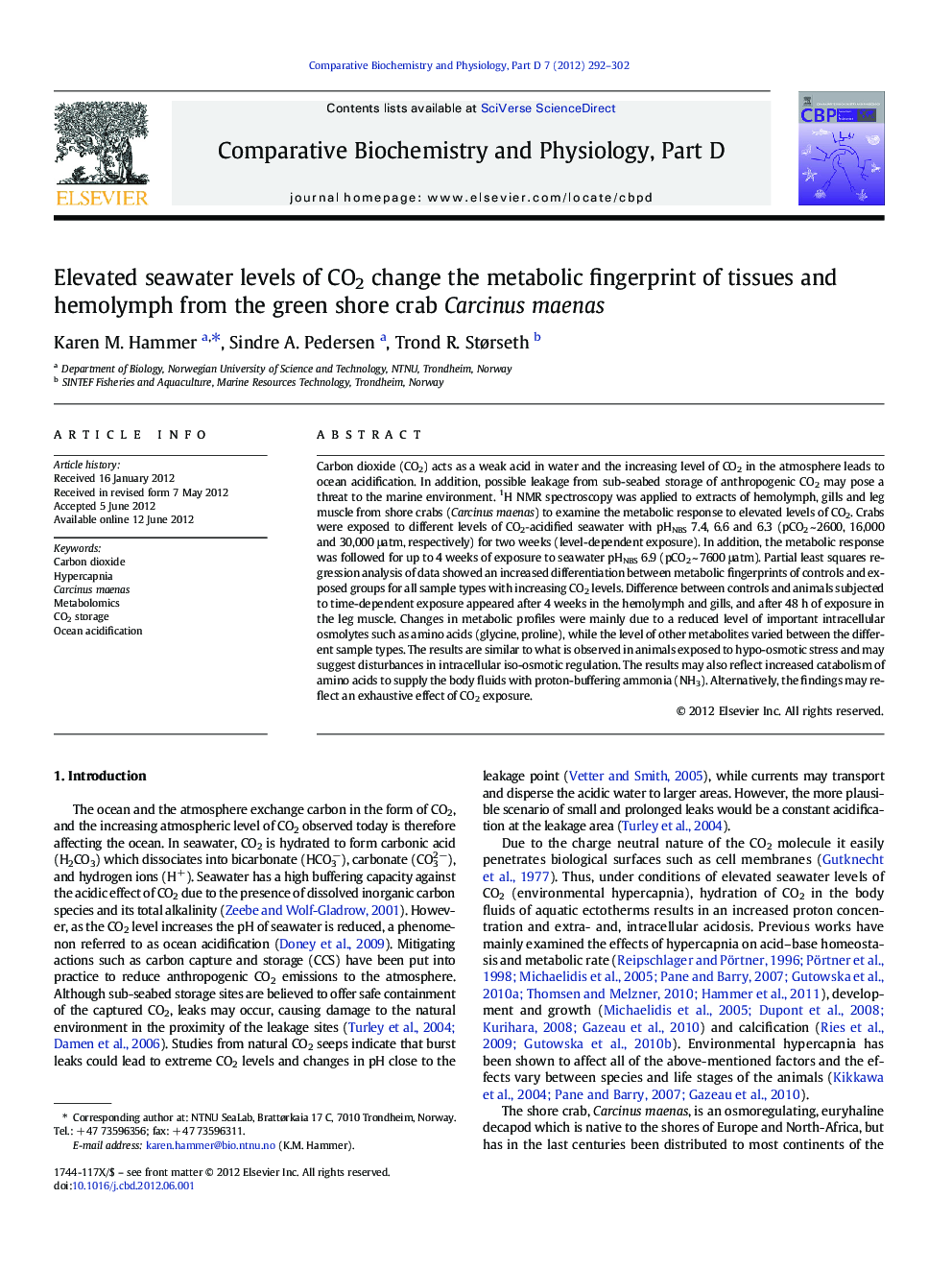| کد مقاله | کد نشریه | سال انتشار | مقاله انگلیسی | نسخه تمام متن |
|---|---|---|---|---|
| 1978716 | 1061618 | 2012 | 11 صفحه PDF | دانلود رایگان |

Carbon dioxide (CO2) acts as a weak acid in water and the increasing level of CO2 in the atmosphere leads to ocean acidification. In addition, possible leakage from sub-seabed storage of anthropogenic CO2 may pose a threat to the marine environment. 1H NMR spectroscopy was applied to extracts of hemolymph, gills and leg muscle from shore crabs (Carcinus maenas) to examine the metabolic response to elevated levels of CO2. Crabs were exposed to different levels of CO2‐acidified seawater with pHNBS 7.4, 6.6 and 6.3 (pCO2 ~ 2600, 16,000 and 30,000 μatm, respectively) for two weeks (level-dependent exposure). In addition, the metabolic response was followed for up to 4 weeks of exposure to seawater pHNBS 6.9 (pCO2 ~ 7600 μatm). Partial least squares regression analysis of data showed an increased differentiation between metabolic fingerprints of controls and exposed groups for all sample types with increasing CO2 levels. Difference between controls and animals subjected to time-dependent exposure appeared after 4 weeks in the hemolymph and gills, and after 48 h of exposure in the leg muscle. Changes in metabolic profiles were mainly due to a reduced level of important intracellular osmolytes such as amino acids (glycine, proline), while the level of other metabolites varied between the different sample types. The results are similar to what is observed in animals exposed to hypo-osmotic stress and may suggest disturbances in intracellular iso-osmotic regulation. The results may also reflect increased catabolism of amino acids to supply the body fluids with proton-buffering ammonia (NH3). Alternatively, the findings may reflect an exhaustive effect of CO2 exposure.
Journal: Comparative Biochemistry and Physiology Part D: Genomics and Proteomics - Volume 7, Issue 3, September 2012, Pages 292–302